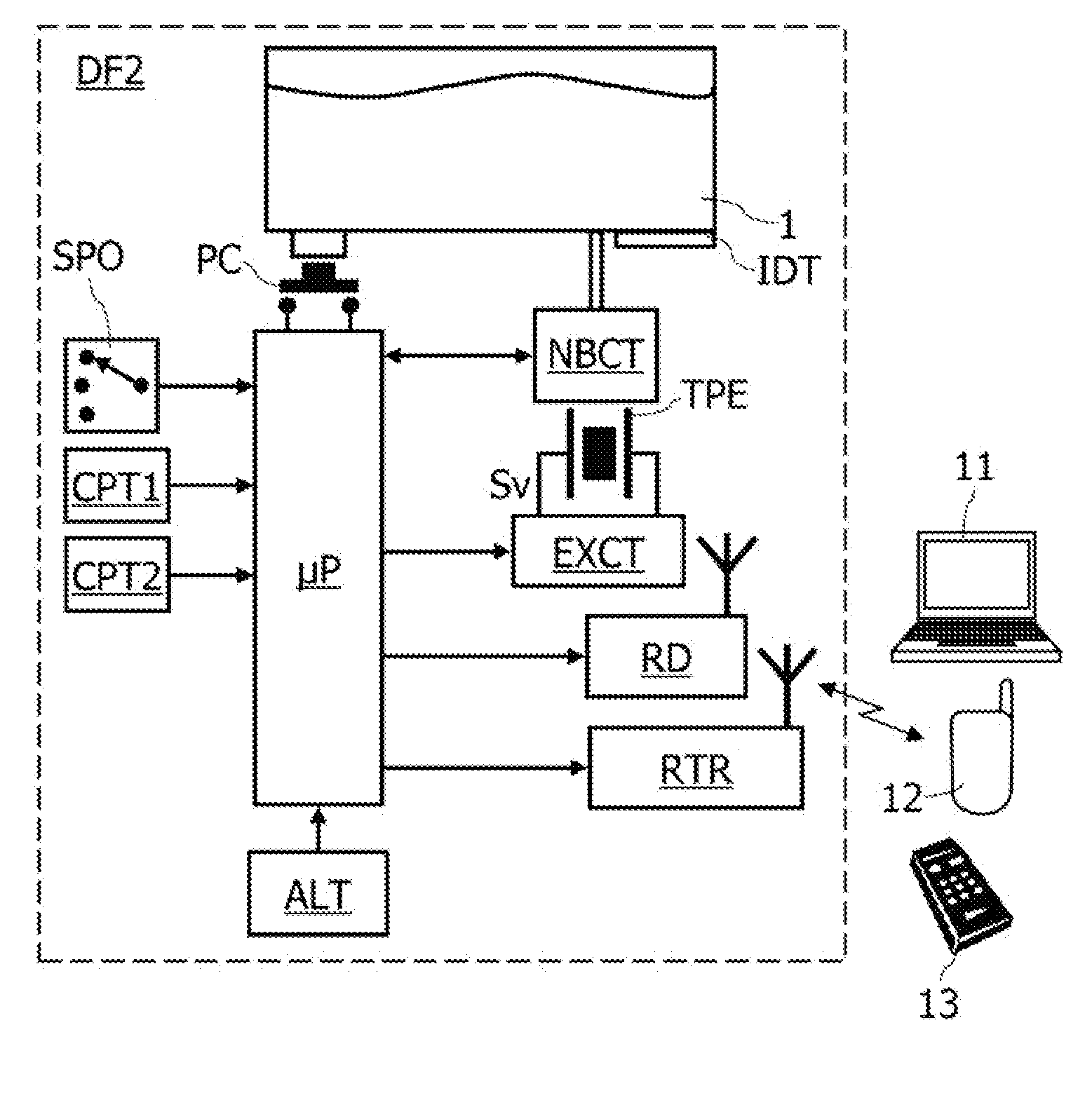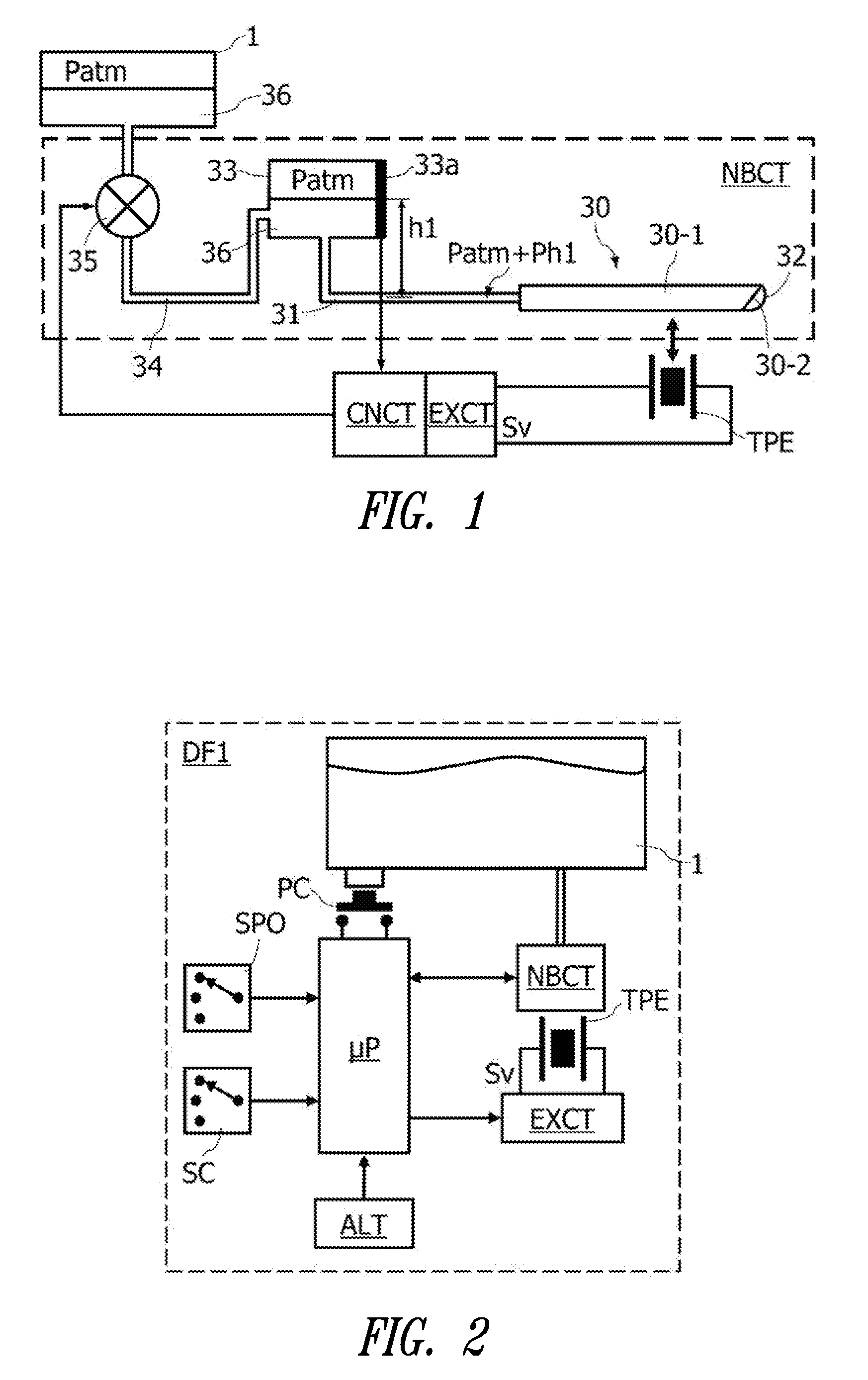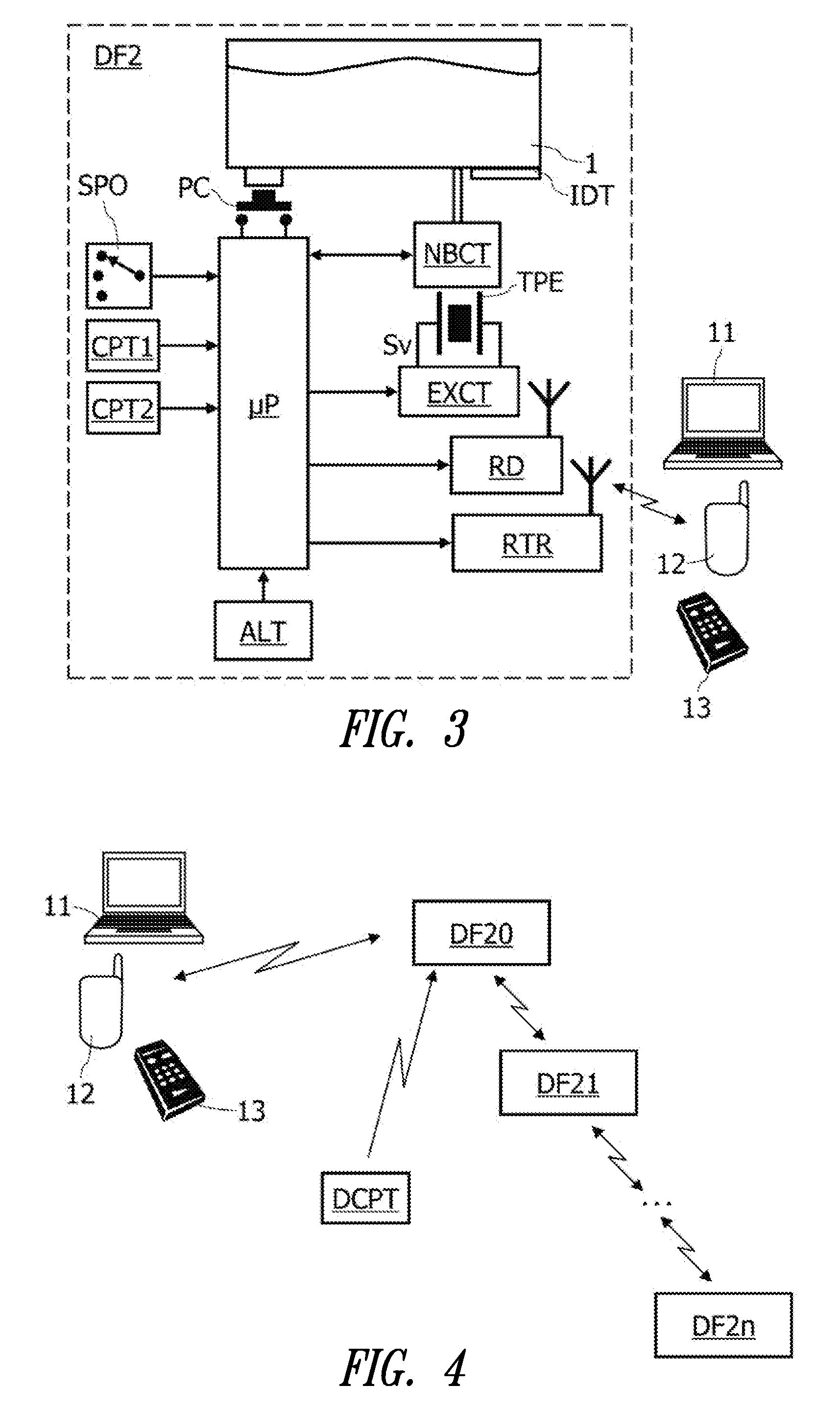Control method of a device for nebulizing liquids into the air
a control method and liquid technology, applied in the direction of applications, atomized substances, transportation and packaging, etc., can solve the problems of reducing the perception of odor, reducing the efficiency of continuous nebulization, and reducing the operating li
- Summary
- Abstract
- Description
- Claims
- Application Information
AI Technical Summary
Benefits of technology
Problems solved by technology
Method used
Image
Examples
Embodiment Construction
[0050]FIG. 1 represents a general diagram of a liquid nebulization device of the type having a vibrating capillary tube. The device includes a principal reservoir 1 containing a liquid 36 to be nebulized, and a nebulization circuit NBCT fed by the reservoir 1. The nebulization circuit NBCT includes a nebulization head 30, an intermediate reservoir 33 also containing liquid 36, a pipe 31 connecting the reservoir 33 to the nebulization head 30 and a pipe 34 equipped with an electric pump or valve 35, connecting reservoir 1 to reservoir 33. Reservoirs 1 and 33 are under atmospheric pressure Patm. The nebulization head 30, substantially horizontal, includes a capillary tube 30-1 and a nozzle 30-2 for liquid ejection. The nebulization head generally takes the form of a hollow needle with internal diameter less than one millimeter and a length of a few centimeters, the body of which forms the capillary tube 30-1 and the distal end of which, beveled, forms the ejection nozzle 30-2. The neb...
PUM
 Login to View More
Login to View More Abstract
Description
Claims
Application Information
 Login to View More
Login to View More - R&D
- Intellectual Property
- Life Sciences
- Materials
- Tech Scout
- Unparalleled Data Quality
- Higher Quality Content
- 60% Fewer Hallucinations
Browse by: Latest US Patents, China's latest patents, Technical Efficacy Thesaurus, Application Domain, Technology Topic, Popular Technical Reports.
© 2025 PatSnap. All rights reserved.Legal|Privacy policy|Modern Slavery Act Transparency Statement|Sitemap|About US| Contact US: help@patsnap.com



